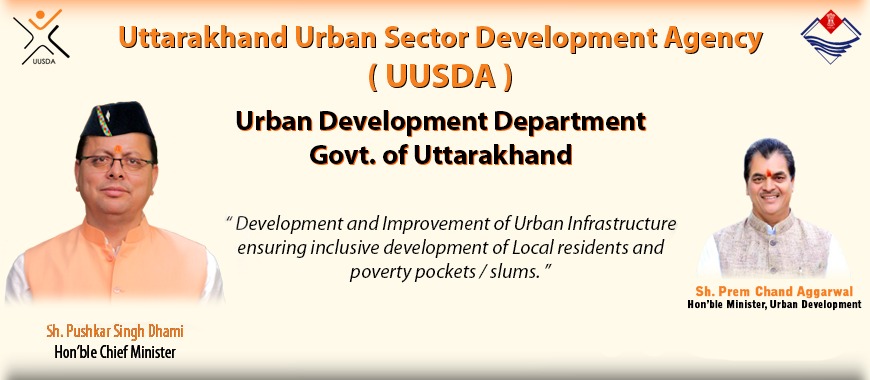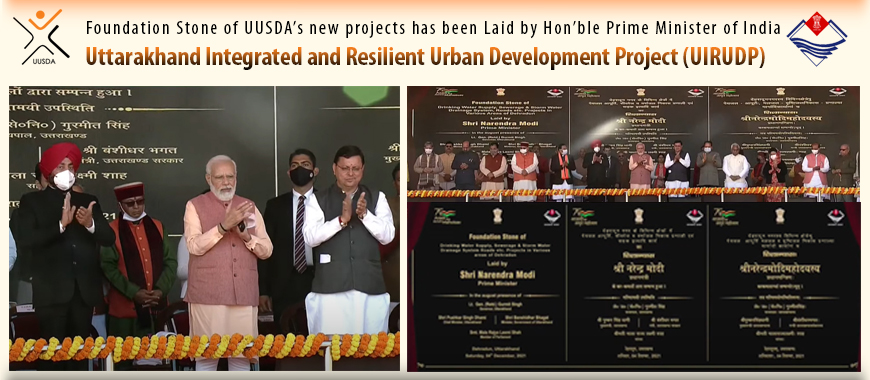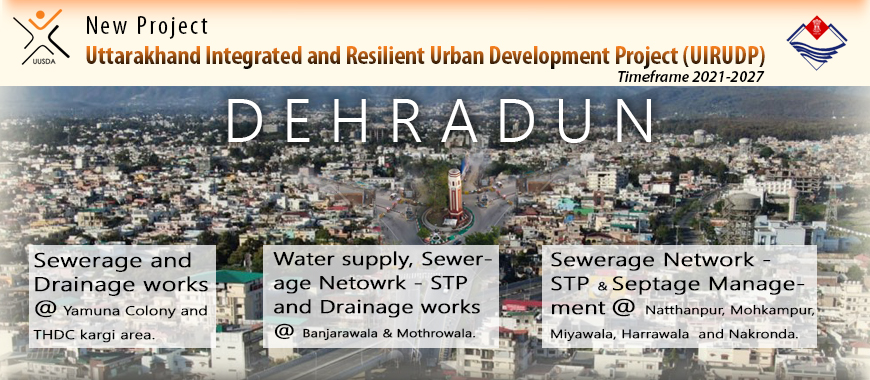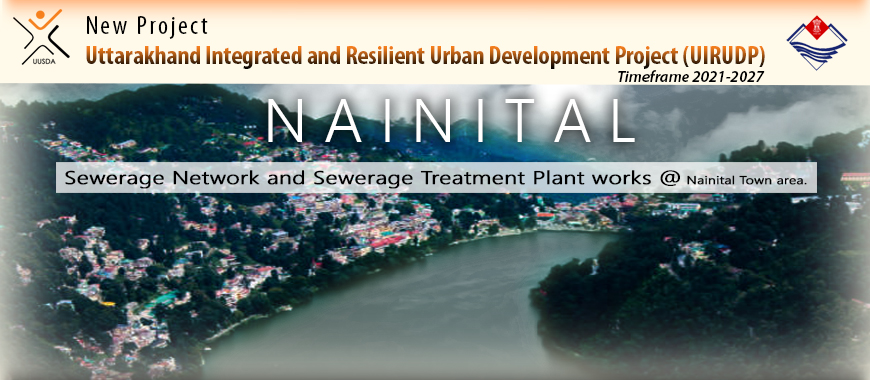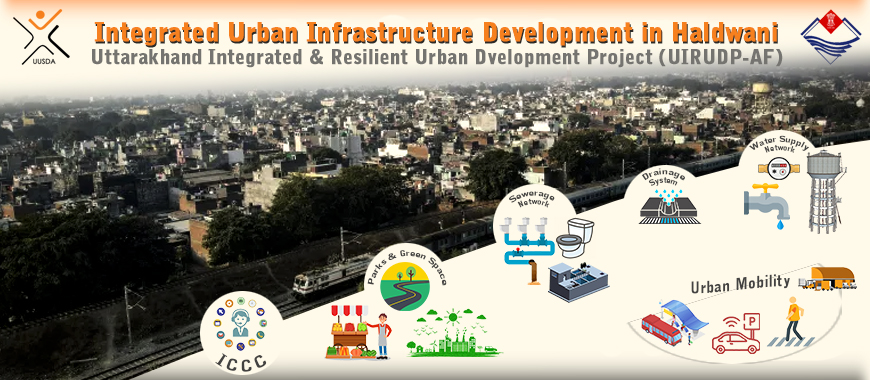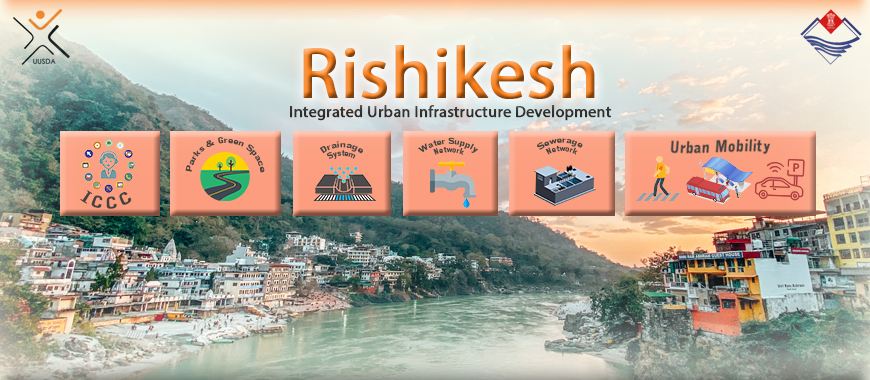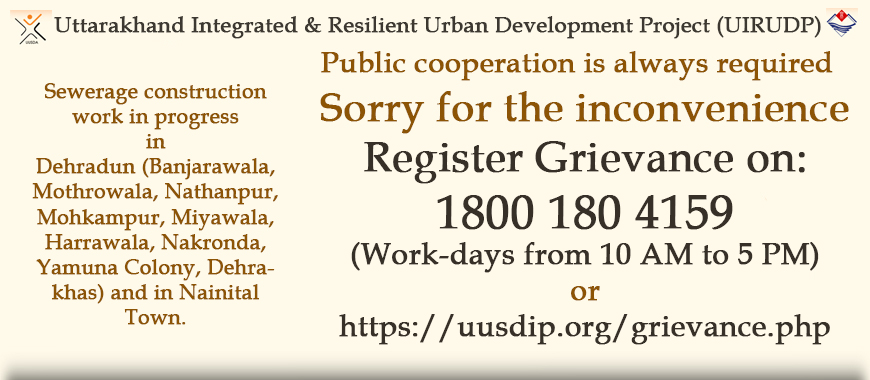The project will work with the Government of Uttarakhand (GOU) to enhance livability in Haldwani City and the towns of Champawat, Kichha, Kotdwar, and Vikasnagar. In Haldwani, the project will support (i) increased urban mobility through an improved road network and establishment of the first public transportation system with compressed natural gas (CNG) buses, an intelligent traffic management system, and a pilot of electric buses (e-buses); (ii) improved flood management through enhanced drainage and outfalls, and implementation of early flood warning systems; and (iii) integrated public services through a green-certified administrative complex and bus terminus. In the four towns, the project will finance safe, efficient, and climate-resilient water supply services with performance-based design-build-operate (DBO) contracts, and upgrade sanitation systems by adopting citywide inclusive sanitation in Vikasnagar.
- Project Name
- Uttarakhand Livability Improvement Project
- Project Number
- 56304-001
- Country / Economy
-
- Project Status
- Proposed
- Project Type / Modality of Assistance
-
- Source of Funding / Amount
-
Loan: Uttarakhand Livability Improvement Project
| Ordinary capital resources |
US$ 200.00 million |
| European Investment Bank |
US$ 191.00 million |
- Operational Priorities
-
- OP1: Addressing remaining poverty and reducing inequalities
- OP2: Accelerating progress in gender equality
- OP3: Tackling climate change, building climate and disaster resilience, and enhancing environmental sustainability
- OP4: Making cities more livable
- OP6: Strengthening governance and institutional capacity
- Sector / Subsector
-
-
Transport / Urban roads and traffic management
-
Water and other urban infrastructure and services / Other urban services - Urban flood protection - Urban policy, institutional and capacity development - Urban sewerage - Urban water supply
- Gender
- Effective gender mainstreaming
- Description
- The project will work with the Government of Uttarakhand (GOU) to enhance livability in Haldwani City and the towns of Champawat, Kichha, Kotdwar, and Vikasnagar. In Haldwani, the project will support (i) increased urban mobility through an improved road network and establishment of the first public transportation system with compressed natural gas (CNG) buses, an intelligent traffic management system, and a pilot of electric buses (e-buses); (ii) improved flood management through enhanced drainage and outfalls, and implementation of early flood warning systems; and (iii) integrated public services through a green-certified administrative complex and bus terminus. In the four towns, the project will finance safe, efficient, and climate-resilient water supply services with performance-based design-build-operate (DBO) contracts, and upgrade sanitation systems by adopting citywide inclusive sanitation in Vikasnagar.
- Project Rationale and Linkage to Country/Regional Strategy
- Uttarakhand is a hilly state located in the foothills of the Himalayas, with abundant natural resources including water and forests. Its economy is primarily agrarian with more than 80.0% of its population (11.7 million in 2024) engaged in agriculture and related activities, and manufacturing and tourism account for the next largest shares of employment. Haldwani had an estimated population of 370,810 in 2022 and serves as the state's economic hub, with a high concentration of commercial, financial, and industrial activities. It attracts a large number of migrants, resulting in a high population growth rate (37.4%) from 2001 to 2011, slightly below the rate (40.0%) for the state's other urban areas, and higher than average for the state (18.8%) and India (17.6%). While the city's population growth rate is declining because of low livability and lack of employment opportunities, it also faces challenges in effectively delivering public services because its infrastructure and facilities are strained, outdated, dispersed, and often overcrowded. Haldwani also faces challenges in the form of significant property damage and losses to households and businesses resulting from increased flooding caused by (i) increased rainfall frequency and intensity as a result of climate change; (ii) an increase in impermeable surfaces in urban areas, illegal construction, inadequate drainage capacity, and insufficient de-silting, which adversely affects drainage systems; (iii) inappropriate waste disposal in drains; and (v) poor urban planning and land use practices. Haldwani is facing increased traffic congestion and significant socioeconomic costs as a result of the predominance of single-lane roads, its growing reliance on private vehicles, and the lack of a public transport system. Similarly, encroached roads, poorly designed and inaccessible footpaths, unlit and dilapidated bus stops, and irregular availability of public transport facilities lead to mobility constraints, disproportionately affecting students, youth, women, and girls. The four project towns, which face increasing demand for water, have low water service levels, with an average supply of 70 liters per capita per day (lpcd), average service duration of 2.5 hours a day, coverage of 70%, and nonrevenue water (NRW) of 40%. These towns have little or no sewerage network, but sanitation coverage is generally satisfactory at 81% through septic tanks, soak pits, and pit latrines. In Vikasnagar, sanitation coverage is about 45%, with only 10%-15% of this is connected to an undersized sewerage network. In the absence of sewage treatment facilities untreated wastewater is discharged directly into open drains and water bodies. The inefficient water supply systems negatively impact girls' education, women's economic participation, and children's health. Women contribute significantly to monitoring the service levels of and maintaining these systems. To close the gender gap in urban employment, increasing women's participation in service delivery and building their nontraditional skills is vital.
- Impact
-
Quality of life of urban citizens improved (Urban Development Directorate Vision).
- Outcome
-
Coverage, efficiency, resilience, and sustainability of urban services in project areas and urban mobility, flood management, and public services in Haldwani improved
- Outputs
-
Integrated, upgraded, low-carbon, and climate-resilient urban infrastructure and facilities developed in Haldwani
Water supply and sanitation infrastructure improved and made climate-resilient in the four project towns
Institutional capacities of implementing agency and urban local bodies improved
Public awareness and community participation in water, sanitation, hygiene, and road safety improved in the project towns
- Geographical Location
- Nation-wide, Champawat, Dehradun, Nainital, Pauri Garhwal

